Supersonic Flow over SR-71 Blackbird CFD Simulation
Free
- The present CFD Project simulates supersonic airflow over SR-71 blackbird aircraft via ANSYS Fluent software.
- We modeled the geometry using ANSYS Design Modeler software and created the mesh using ANSYS Meshing software.
- The meshing is Polyhedra, and the number of cells is 1,744,624.
- the air property is selected as the ideal gas to model compressibility.
To Order Your Project or benefit from a CFD consultation, contact our experts via email ([email protected]), online support tab, or WhatsApp at +44 7443 197273.
There are some Free Products to check our service quality.
If you want the training video in another language instead of English, ask it via [email protected] after you buy the product.
Description
Supersonic Flow over SR-71 Blackbird Aircraft CFD Simulation, ANSYS Fluent Tutorial
Description
In this project, the supersonic airflow over SR-71 blackbird aircraft is simulated. Supersonic speed is the speed of an object that exceeds the speed of sound. The sound speed is estimated to be around 343 m/s in the dry air at a temperature of 20 C. In this simulation, the SR-71 aircraft experiences 446m/s speed, so the Mach number is 1.3. Plus, the angle of attack is assumed to be 2-degree.
The 3D geometry was imported and generated in Design Modeler software. An SR-71 blackbird aircraft geometry is imported and placed in an enclosure. In addition, an unstructured mesh grid was carried out using Ansys Meshing software, and overall, 1,744,624 elements were generated. Moreover, the tetrahedron mesh grid was converted to polyhedra in ANSYS Fluent software.
This CFD project is the 5th episode of the ANSYS Fluent General Training Course.
Methodology: Supersonic Flow over SR-71 Blackbird Aircraft
This simulation focuses on using a pressure-based solver and a Coupled pressure-velocity coupling algorithm along with the ideal-gas behavior of air density to model compressible flows instead of a having Density-based approach. Also, the simulation is independent of Time, so it has performed in steady state form.
Conclusion
In this project, the Mach number of the flow was assumed to be 1.3, and there was supersonic flow over the aircraft. Due to fluid compressibility, a density-based solver type should be hired. Instead, we came up with using a pressure-based solver type and coupled velocity-pressure coupling algorithm and ideal gas behavior of the density simultaneously.
Notice that the viscosity was a function of temperature, so we used the Sutherland model. As contours show, There is a shock wave around the aircraft’s nose and engines that causes an extreme velocity and pressure gradient. Therefore, the density experiences different values, and the compressibility assumption is of the essence. Furthermore, as expected, there is a direct correlation between pressure, density, and temperature.
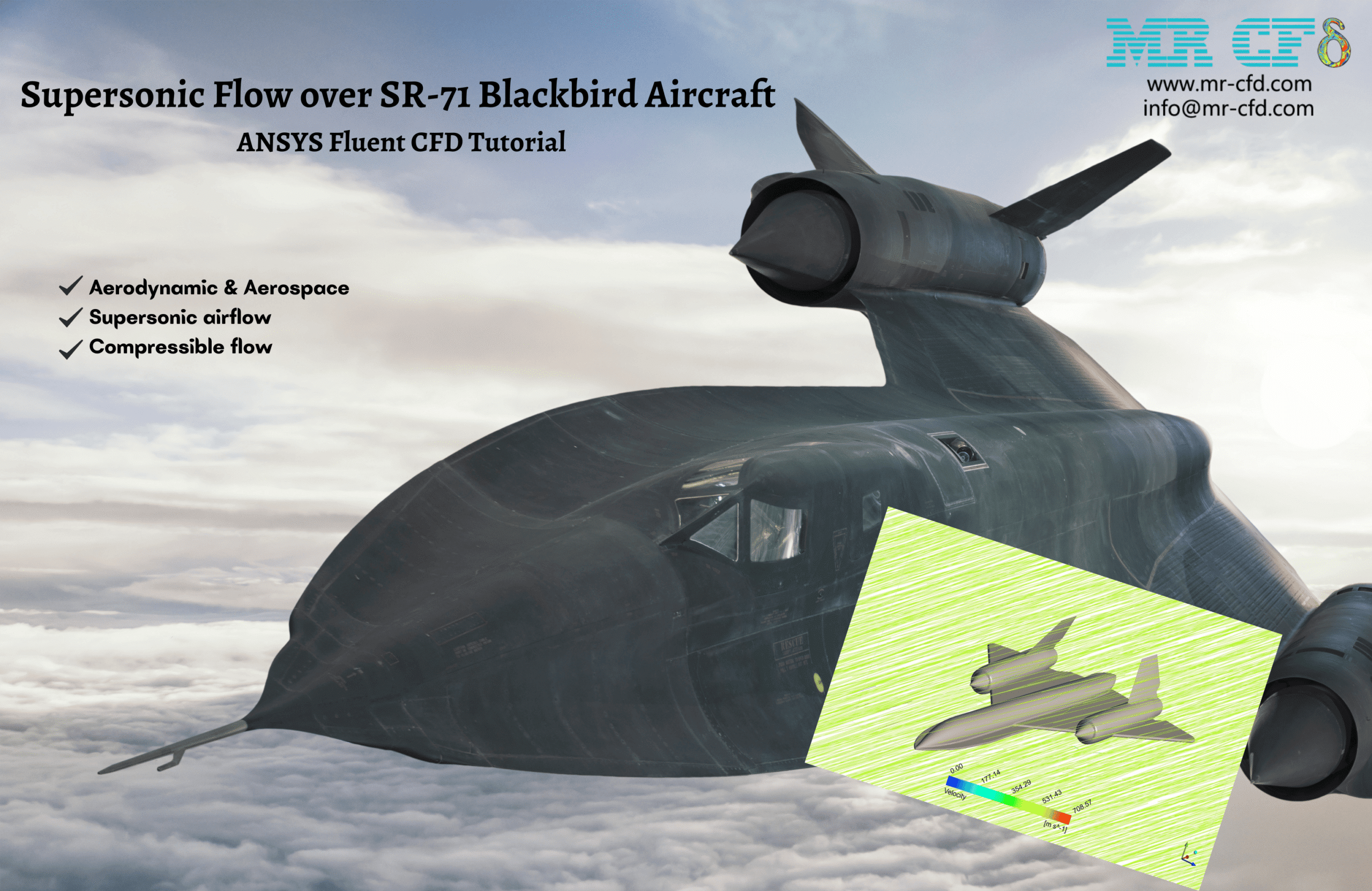
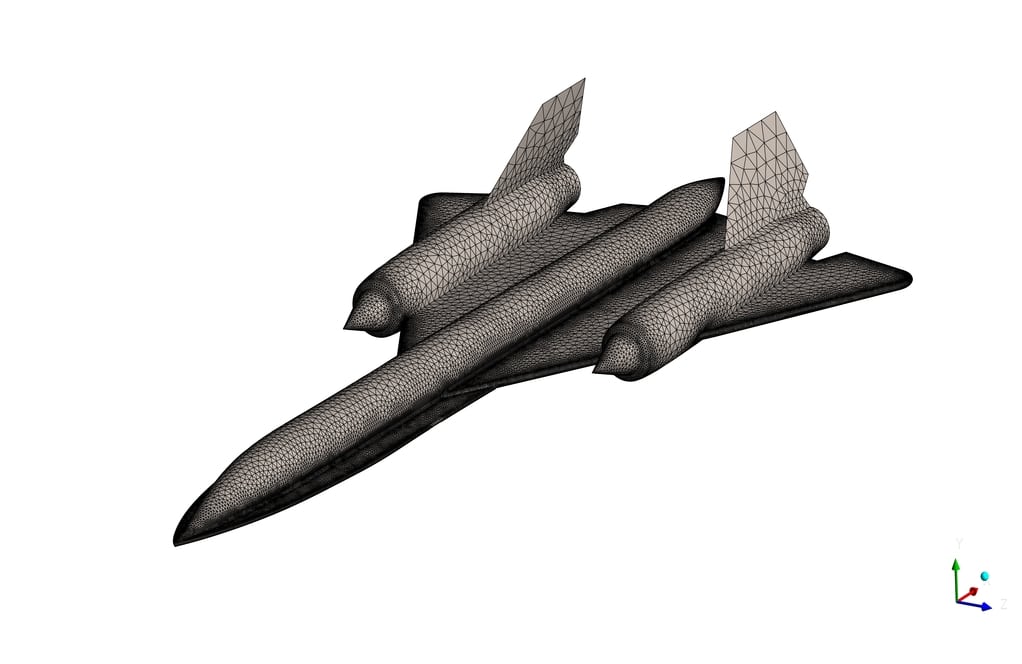
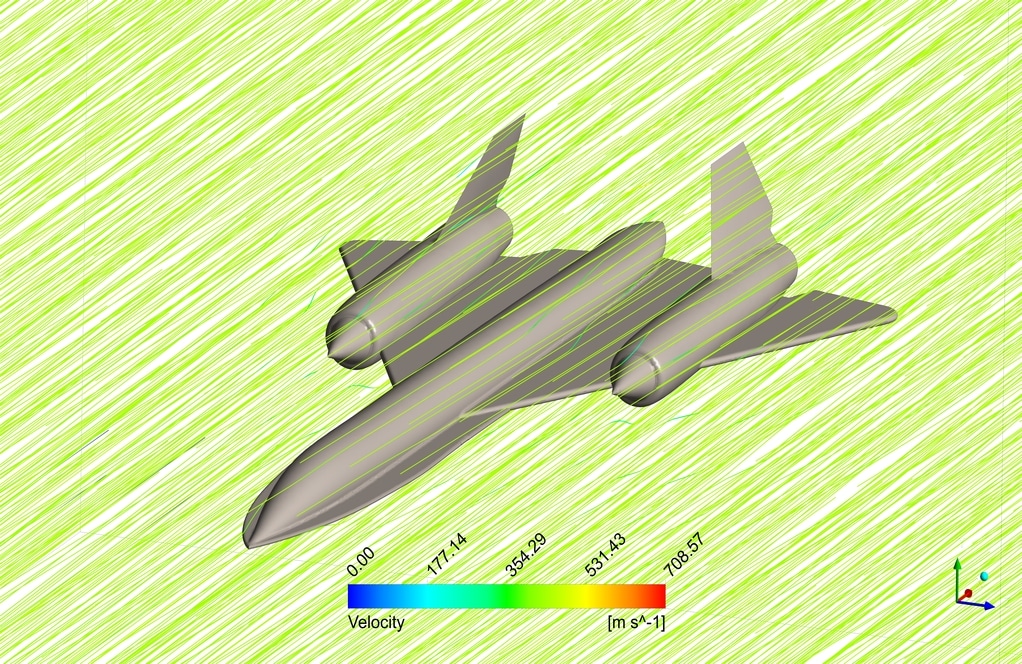
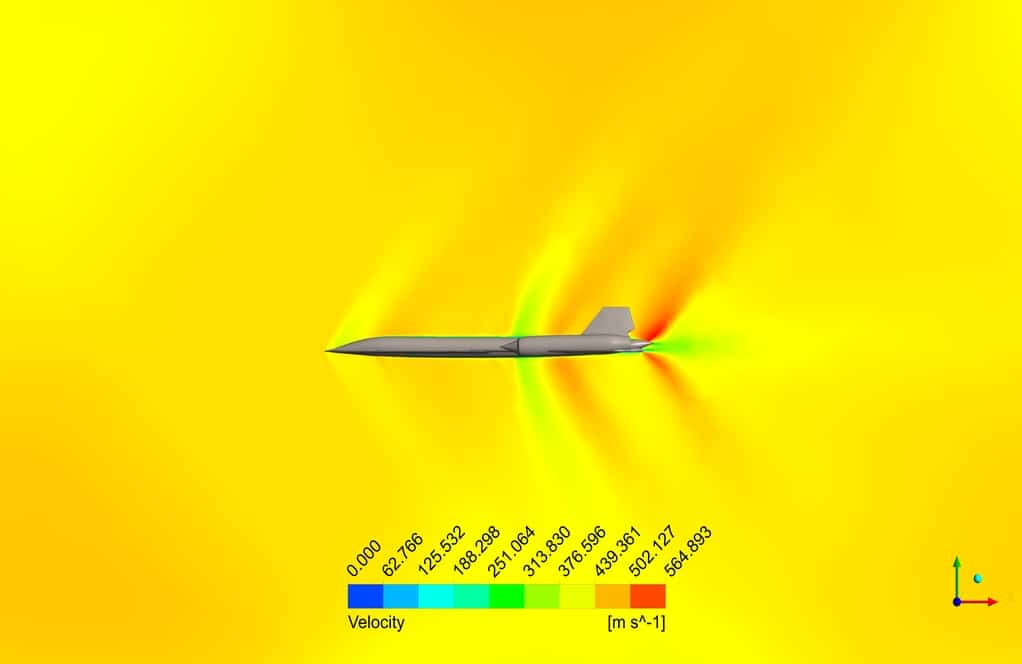
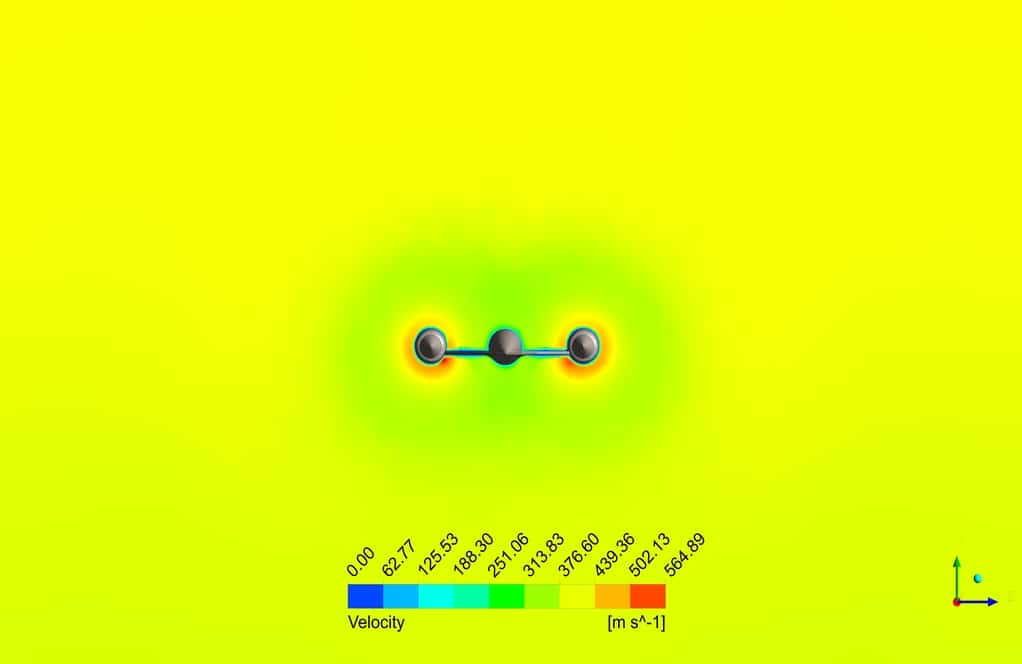
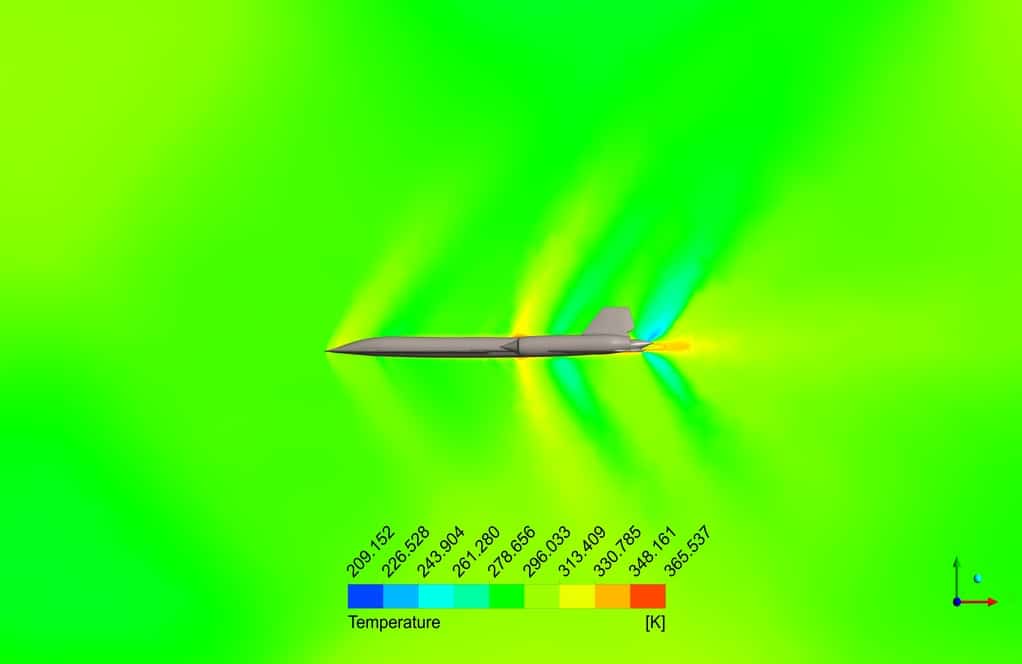
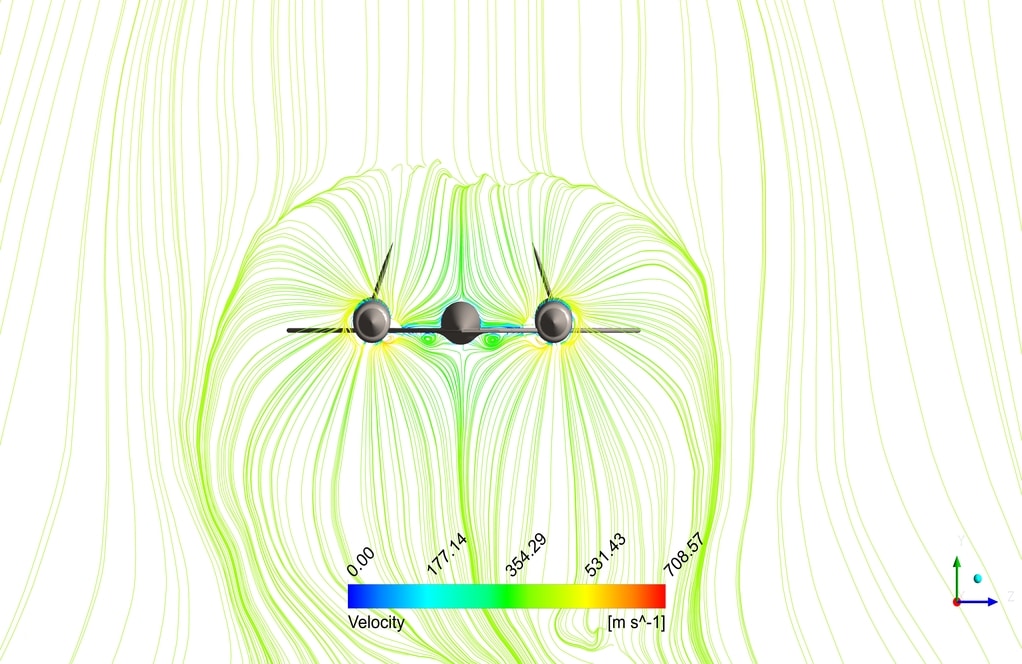
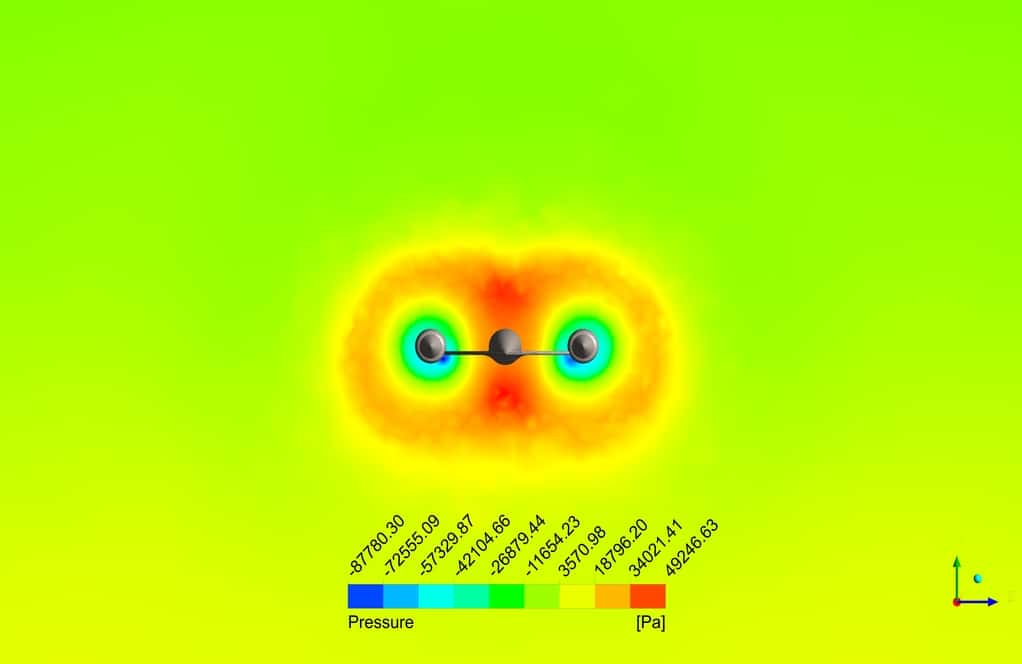
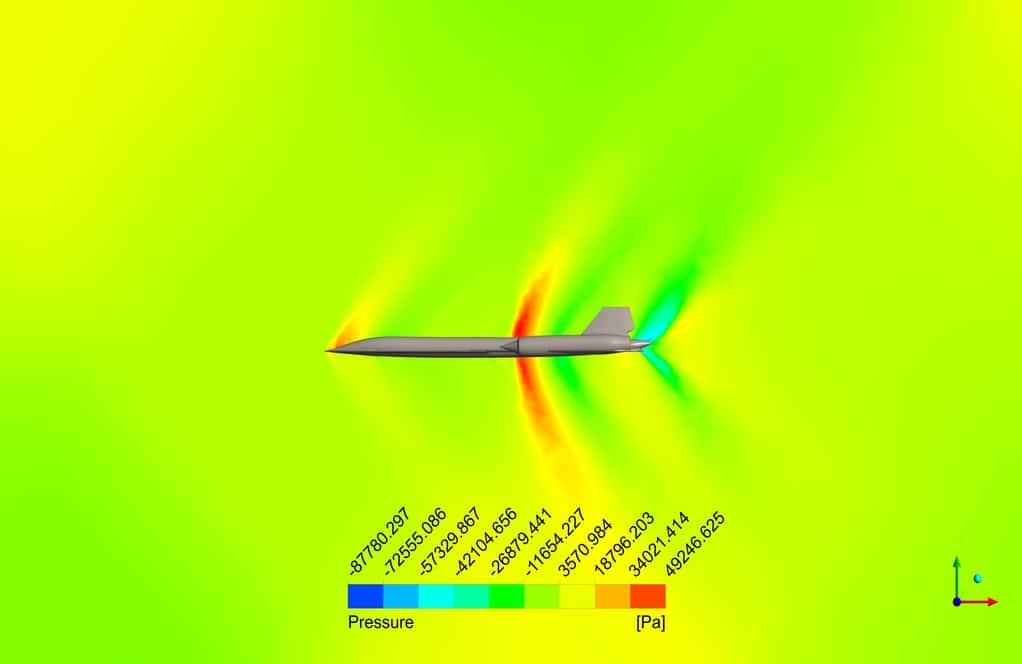
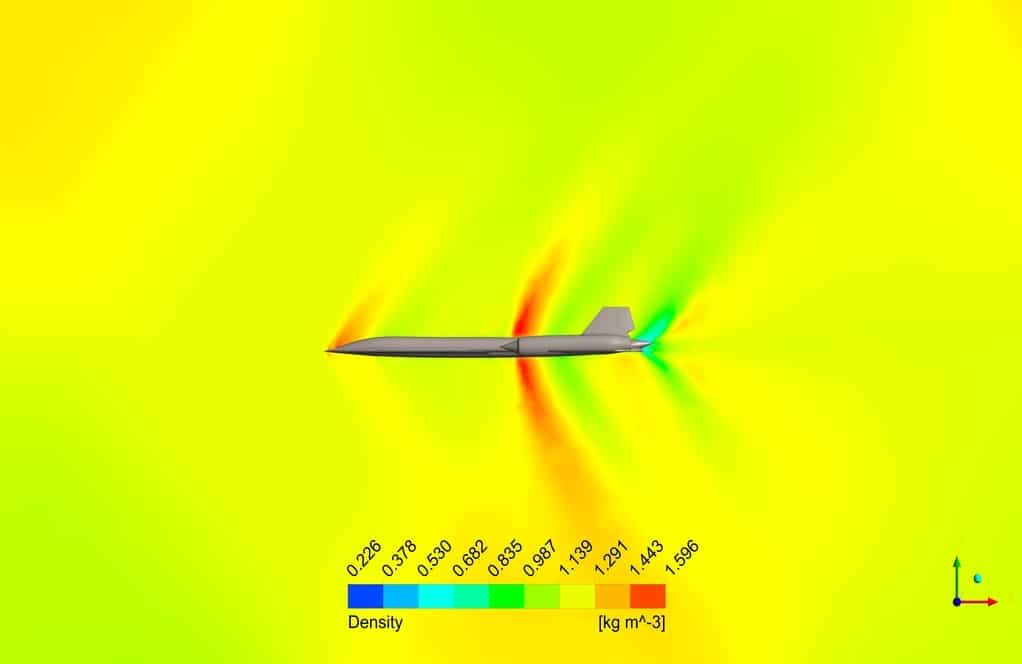
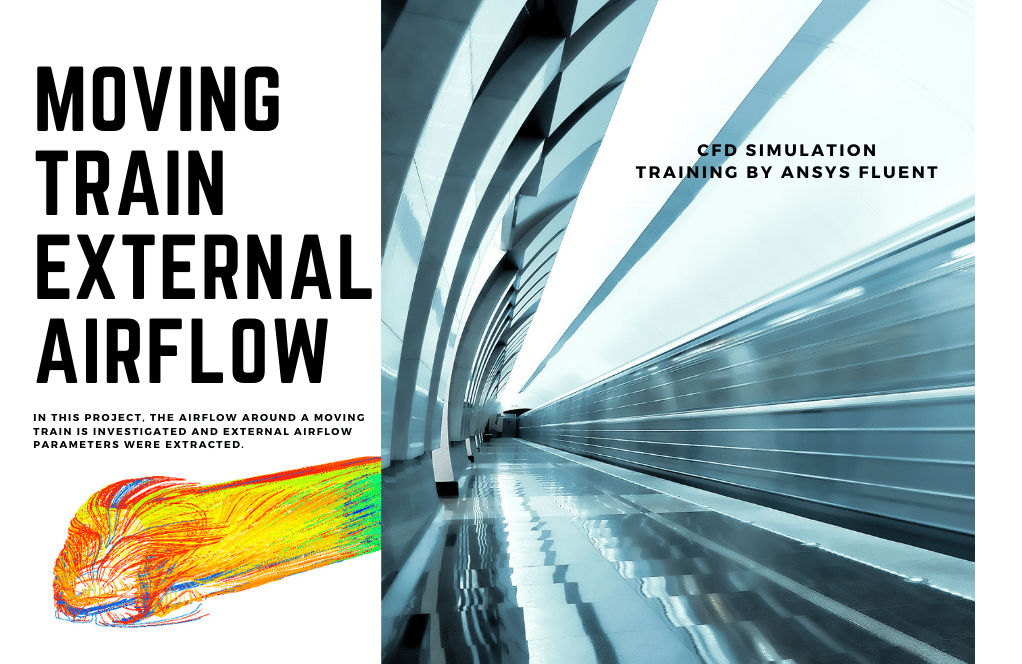
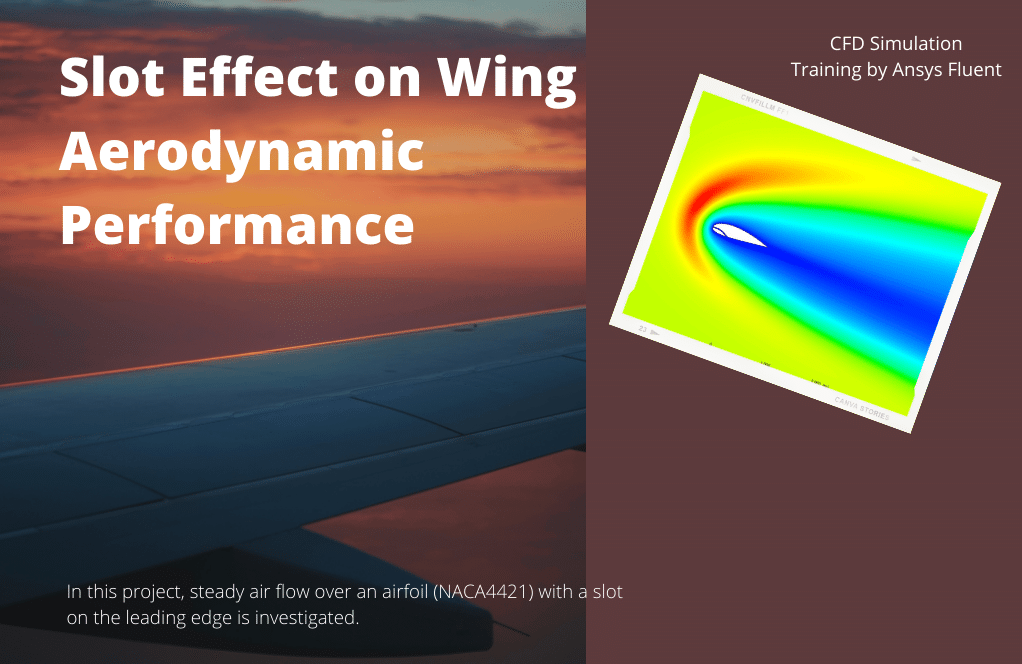
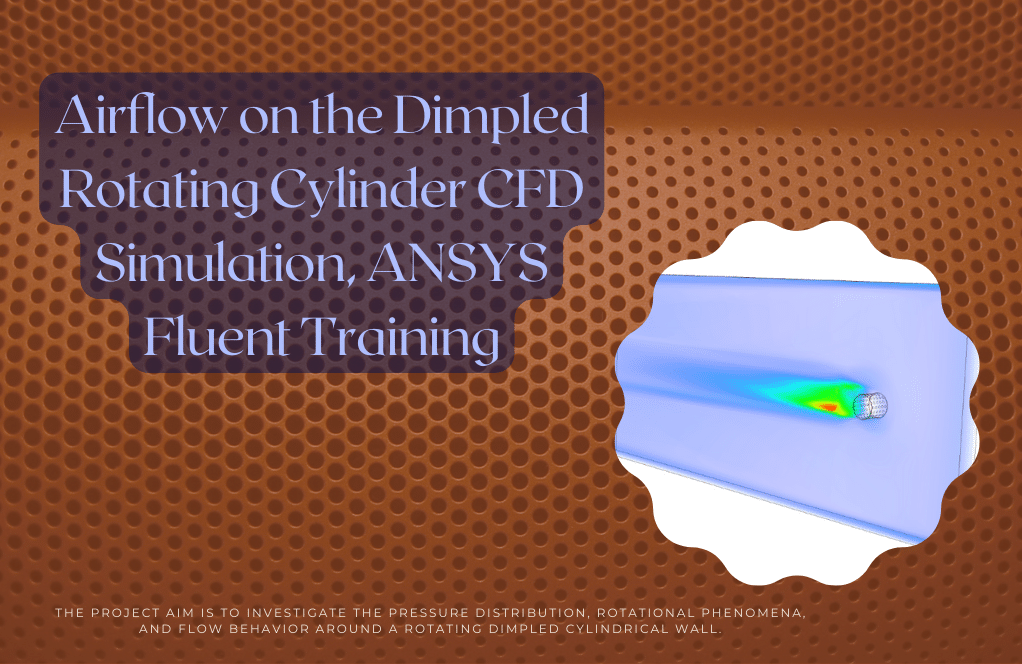
Johann Lueilwitz –
The tutorial was great and incredibly helpful in understanding supersonic flows! Just wanted to ask if the shock wave position was consistent in all the simulations runs?
MR CFD Support –
Glad to hear the tutorial was beneficial for you! Regarding your question, typically in steady-state simulations like this one, the shock wave position should be consistent once the solution has fully converged. However, in some cases, minor variations can occur due to mesh quality or solver settings. Our team ensures that the mesh density and solver parameters are set to capture the shock accurately for consistency.
Prof. Freeda Torp –
I enjoyed going through the Supersonic Flow over SR-71 Blackbird CFD Simulation tutorial. The explanations were clear and detailed, which made it easier to follow along with the steps. Plus, the visual representations of shock waves and compressibility effects enhanced the learning experience. Looking forward to more tutorials like this!
MR CFD Support –
Thank you for your review! We’re thrilled to hear that our tutorial on the Supersonic Flow over SR-71 Blackbird was helpful and informative for you. It’s always great to know that our visual aids effectively illustrate complex concepts. We look forward to providing you with more high-quality tutorials in the future.
Cleo Wisoky –
I’m thrilled with how this CFD simulation vividly shows the supersonic effects on the SR-71 Blackbird. The shock wave visualization is mesmerizing, highlighting the aircraft’s performance at high speeds. Can’t wait to implement similar techniques in my work!
MR CFD Support –
Thank you for your enthusiastic review! We’re pleased to hear how impactful our simulation was in demonstrating the complex aerodynamics of the SR-71 Blackbird at supersonic speeds and that it provided valuable insights for your projects. If you have any more questions or need further assistance, feel free to reach out!
Bruce Barton –
I really appreciated how the simulation captured the complex flow dynamics around the SR-71 Blackbird, particularly the shock wave formations. The visuals provided were highly detailed and helped in understanding how these factors affect the aircraft at supersonic speeds.
MR CFD Support –
Thank you for your kind words! We’re glad to hear that you found the simulation valuable and that the visuals enhanced your understanding of the aerodynamics involved in supersonic flight. Your feedback is very important to us, and we’re happy to have met your expectations with our CFD simulation of the SR-71 Blackbird.
Maryse Mayer –
I was impressed with the clarity of the shock wave displayed in the simulation results. Can you tell me more about how the mesh grid affected the accuracy of capturing the shock wave around the aircraft’s nose and engines?
MR CFD Support –
In this simulation, an unstructured mesh grid with 1,744,624 polyhedral elements was used. Polyhedral meshes provide a high level of accuracy for flow features with steep gradients, such as shock waves in supersonic flow conditions. This type of mesh is effective at capturing the complex flow phenomena due to its higher resolution capabilities, contributing significantly to the clear and precise depiction of shock waves present around the SR-71 Blackbird’s nose and engines. This meticulous meshing helps ensure the accuracy of predicting the extreme velocity and pressure gradients as well as the compressibility effects that are essential in supersonic flow simulations.
Jennyfer Muller –
I thoroughly enjoyed the Supersonic Flow over SR-71 Blackbird CFD Simulation tutorial! The step-by-step guidance was clear, and watching the shock wave patterns develop around the aircraft was especially fascinating. It definitely helped deepen my understanding of compressible flows at high velocities, and it was impressive to see the correlation between pressure, density, and temperature. Excellent tutorial for visualizing complex aerodynamics!
MR CFD Support –
Thank you for your kind words and for taking the time to leave a review! We’re thrilled to hear that our tutorial helped enhance your understanding of compressible flows and that you found the visualization of the aerodynamics impressive. We aim to provide valuable learning experiences, and feedback like yours motivates us to continue delivering quality educational content. If you have any further questions or need assistance with any other CFD concepts, please don’t hesitate to reach out to us.